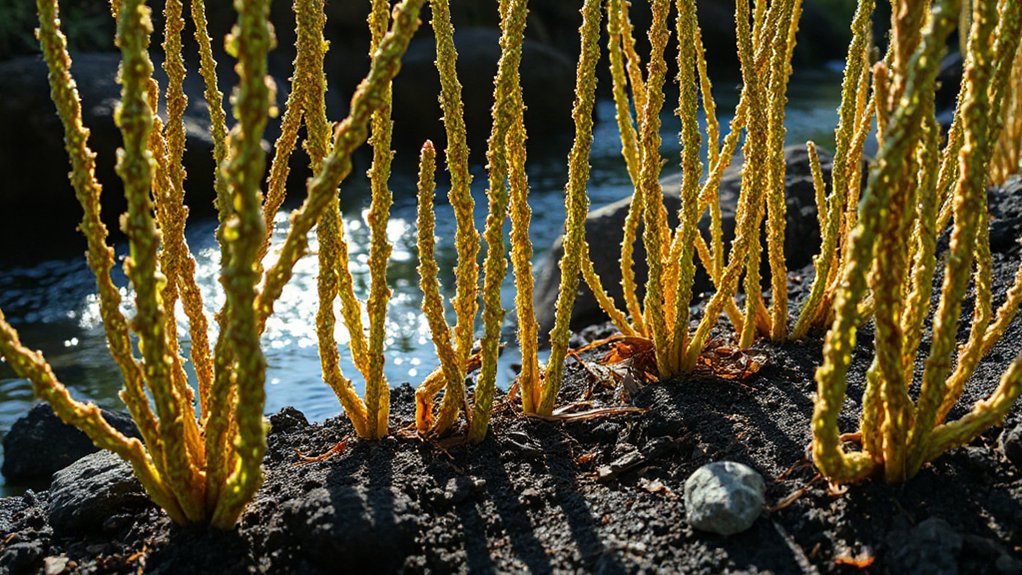Survivors. That’s what horsetails are. These weird plants have stuck around for 350 million years, barely changing while dinosaurs came and went. Now they’re causing a stir in climate science by mimicking oxygen signatures previously thought to come only from meteorites. Talk about an identity crisis for researchers.
Prehistoric plant rebels disguising themselves as space rocks while scientists scramble to rewrite the textbooks.
The genus *Equisetum* dates back to the Late Jurassic period. That’s 150 million years of basically looking the same. While other plants were evolving fancy flowers and fruits, horsetails just kept doing their thing with jointed hollow stems and cone-like strobili. Stubborn little things.
Once upon a time, during the Carboniferous period, these weren’t the humble plants that we recognize today. They were giants. Tree-like monsters dominating coal swamps. Now they’re relegated to wetlands and pond margins, silently photosynthesizing while the world changes around them.
Their secret weapon? A whole-genome duplication event during the Late Cretaceous. This genetic plot twist likely helped them survive the K-Pg extinction that wiped out the dinosaurs. Same look, different genetic toolkit. Smart move.
The plants’ high silica content makes them nature’s scrubbing brushes. Ancient Romans knew this. Indigenous groups knew this. Modern scientists are finally catching up. The silica also creates unusual oxygen isotope patterns that, until recently, were thought to be exclusive to extraterrestrial materials.
Horsetails aren’t just botanical oddities. Bears eat them. Moose eat them. Humans use them for medicine. They’re living fossils with practical applications, quietly challenging our understanding of Earth’s history through their chemical composition.
Their extensive rhizome systems allow them to thrive in disturbed habitats. Recent fossils discovered in the Jurassic hot springs of Argentina show these plants were already adapted to extreme environments millions of years ago. The single genus of Equisetum contains just 15 species worldwide but has achieved an impressive subcosmopolitan distribution. When everything else gets wiped out, horsetails just keep on coming back. They’re like the cockroaches of the plant world, but more useful and less likely to make you scream.
Climate scientists are now reconsidering ancient oxygen records. All because of a plant that was here before dinosaurs, watched them die out, and will probably outlast humans too. Ironic.
References
- https://www.sciencedaily.com/releases/2011/05/110504183413.htm
- https://pmc.ncbi.nlm.nih.gov/articles/PMC4498207/
- https://themeaningofwater.com/2022/10/02/from-giant-tree-to-little-plant-equisetum-a-study-an-evolution/
- https://botanicgardens.uw.edu/about/blog/2022/04/04/april-2022-plant-profile-field-horsetail-weed-or-wonder/
- https://ag.purdue.edu/btny/purdueweedscience/wp-content/uploads/2021/01/WS-29-W.pdf









